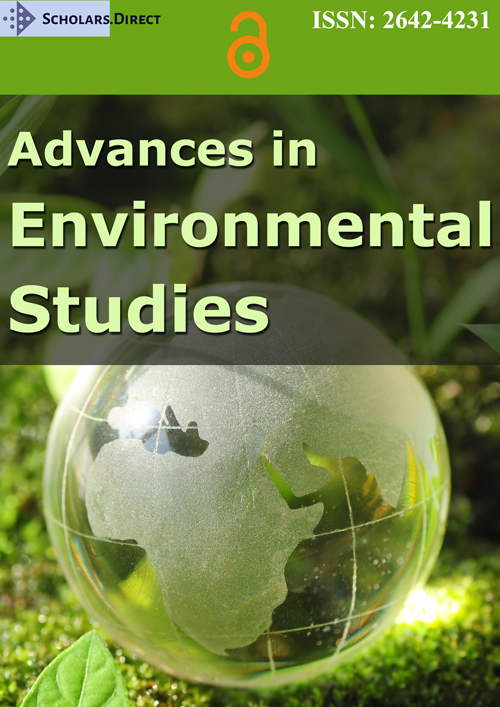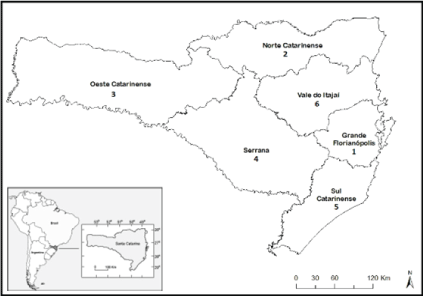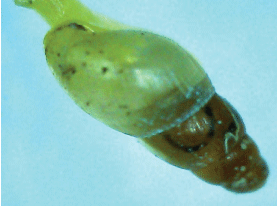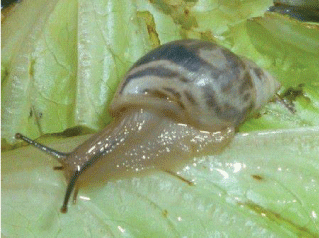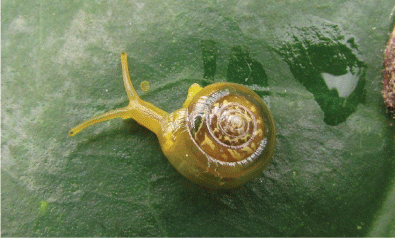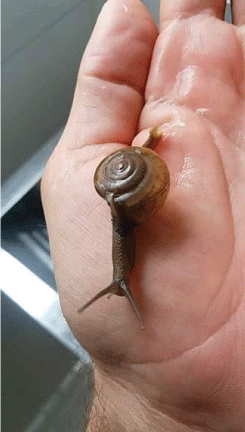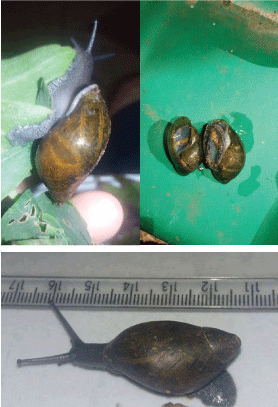Revised and Updated Systematic Inventory of Non-Marine Molluscs Occurring in the State of Santa Catarina/SC, Central Southern Brazil Region
Abstract
Based on the last list of non-marine molluscs from Santa Catarina state, published in 2014, the current inventory of continental molluscs (terrestrial and freshwater) occurring in the State of Santa Catarina/SC is finally consolidated, with a verified/confirmed registry of 232 species and subspecies, sustained product of complete 22 years of systematic field researches, examination of specimens deposited in collections of museums and parallel reference studies, covering 198 gastropods (156 terrestrial, 2 amphibians, 40 freshwater) and 34 limnic bivalves, in addition to the addition of another new twelve (12) species (eighth land gastropods - Leptinaria parana (Pilsbry, 1906); Bulimulus cf. stilbe Pilsbry, 1901; Orthalicus aff. prototypus (Pilsbry, 1899); Megalobulimus abbreviatus Bequaert, 1848; Megalobulimus januarunensis Fontanelle, Cavallari & Simone, 2014; Megalobulimus sanctipauli (Ihering, 1900); Happia sp (in determination process); Macrochlamys indica Benson, 1832 - and four bivalves - Corbicula fluminalis (Müller, 1774); Pisidium aff. dorbignyi (Clessin, 1879); Pisidium aff. vile (Pilsbry, 1897); Sphaerium cambaraense (Mansur, Meier-Brook & Ituarte, 2008) -). Among the species previously related, 26 correspond to exotic and invasive forms (22 gastropods, four bivalves). Additional information regarding its known regional geographic distribution is incorporated/included and updated.
Keywords
Continental (land & limnic) molluscs, Santa Catarina state, Central southern brazil region, Species inventory
Abbreviations
FURB MO - Malacological collection of Fundação Universidade Regional de Blumenau
Continuing with the regional researches conducted since the year 1996 [1], the present contribution incorporates a further twelve (12) species of continental molluscs (terrestrial and freshwater) to the systematic inventory of the State of Santa Catarina/SC previously established [2], knowledge reached in the course of survey work based mainly on publishing reports [3-8], increasing to 232 its number of registered forms, including 99 genera (87 Gastropoda & 12 Bivalvia) and 41 families (36 Gastropoda & 5 Bivalvia) regionally known (Table 1), the final product of complete 22 years of sustained research.
The taxonomic arrangement presented, including categories of genus, species and subspecies, follows the classification of Agudo-Padrón [2,9] involving the general contributions of Bouchet & Rocroi [10], Simone [11], Thomé, et al. [12], Simone [13], Breure, et al. [14], Breure & Romero [15] and Birckolz, et al. [16]. Additionally, the valid status of each species was verified through the virtual program WoRMS (World Register of Marine Species), which also involves non-marine forms.
As in the previous opportunity, the territory of the State was divided into six (6) large malacological regions (Figure 1), for the purposes of the best knowledge concerning the biogeographic distribution of the species thus enumerated [2]. For each related taxa/species a certain quantity of numbers are included, indicating their known spatial occurrence in the corresponding geographical regions.
Results
Species Inventory (Table 1).
Final Considerations
Traditionally, research on molluscs in the Santa Catarina State/SC territory has focused almost entirely on development of commercial cultivation of marine species, non-natives and natives [17,18] and, very occasionally, some freshwater forms [19]. Other general aspects of their bio-ecology, distribution and conservation situation are practically ignored and/or relegated to the background [8,20-22]. However, there are researchers who act outside the State expressing an occasional interest in developing some more specific and focused studies of the local malacofauna [23], particularly in the specific geographic and ecological region of the Itajaí Valley, the largest river basin of the Atlantic slope in Santa Catarina [18].
In this opportunity, additional twelve (12) new species (eight land gastropods - Leptinaria parana (Pilsbry, 1906) (Figure 2); Bulimulus cf. stilbe (Pilsbry, 1901) (Figure 3); Orthalicus aff. prototypus (Pilsbry, 1899); Megalobulimus abbreviatus (Bequaert, 1848); Megalobulimus januarunensis Fontanelle, (Cavallari & Simone, 2014); Megalobulimus sanctipauli (Ihering, 1900); Happia sp (in determination process) (Figure 4); Macrochlamys indica (Benson, 1832) (Figure 5) - and four bivalves - Corbicula fluminalis (Müller, 1774); Pisidium aff. dorbignyi (Clessin, 1879); Pisidium aff. vile (Pilsbry, 1897); Sphaerium cambaraense (Mansur, Meier-Brook & Ituarte, 2008) were confirmed and added to the inventory.
From the knowledge available in the last systematic listing generated [2], suppressed synonyms and some other inconsistencies detected that initially went unnoticed, still embedded in recently presented technical data [24], the current inventory of continental freshwater/limnic and land/terrestrial molluscs in the State of Santa Catarina/SC is finally consolidated, with a verified/confirmed record of 232 species and subspecies, including 99 genera (87 Gastropoda & 12 Bivalvia) and 41 families (36 Gastropoda & 5 Bivalvia) regionally known, the most recent being incorporated the natives SUBULINIDAE Leptinaria parana (Pilsbry, 1906) (Figure 2), BULIMULIDAE Bulimulus cf. stilbe (Pilsbry, 1901) (Figure 3), and the exotic invasive indo-asiatic ARIOPHANTIDAE Macrochlamys indica (Benson, 1832) (Figure 5).
Among the species previously listed in the list, 26 correspond to exotic and invasive forms (22 gastropods, four bivalves). On the other hand, the situation of one of the five (5) native Gastropoda species previously mentioned in the literature and awaiting taxonomic determination [2,4] the AMPHIBULIMIDAE Plekocheilus (Eurytus) aff. rhodocheilus (Reeve, 1848) (Figure 6), was "partially" resolved [25], but another one later incorporated, the SYSTROPHIIDAE Happia sp [3] (Figure 5) is still pending.
For all taxa involved in general (Table 1) new information concerning their known regional geographic distribution (Figure 1) have been incorporated/included and updated. This positive result (increase of reported species and additions to the knowledge regarding the geographical coverage of this biodiversity in the state) clearly reflects the product of the systematic research and concentrated efforts developed on the field in recent last years.
Finally, only one (1) native form in particular, the bivalve HYRIIDAE Diplodon expansus (Küster, 1856) (Table 1), syn. Rhipidodonta charruana (d'Orbigny, 1835), occurs simultaneously in each and every one of the six (6) malacological regions estableced for the State (Figure 1), as well as the following four (4) invasive exotic gastropods: Lymnaea columella (Say, 1817), Meghimatium pictum (Stoliczka, 1873), Deroceras laeve (Müller, 1774) and Bradybaena similaris (Rang, 1831).
Acknowledgements
Special thanks to the field naturalist "Jefferson Souza da Luz" (staff of the "Project AM, long time partner) for his important active contribution and participation during the development of this research, as well as to anonymous reviewers for their timely and valuable observations and suggestions, which have substantially improved the contents of this work.
References
- Agudo-Padron AI (2012) Mollusc fauna in the Atlantic Slope region of the Southern Cone of South America: A preliminary biogeographical interpretation. Int J Aquacult 2: 15-20.
- Agudo-Padron AI (2014) Inventario sistematico de los moluscos continentales ocurrentes en el Estado de Santa Catarina, Brasil. Bioma 2: 6-23.
- Agudo-Padron AI, Funez LA (2014) Additional geographical ocorrence of continental mollusks from Santa Catarina's State, SC, Southern Brazil region, including a "preliminary new record" for the regional inventory. FMCS Newsletter Ellipsaria 16: 16-20.
- Agudo-Padron AI, Luz JS da, Funez LA, et al. (2014) Nine new records to inventory of continental mollusc species from Santa Catarina State, Central Southern Brazil. Braz J Biol Sci 1: 15-20.
- Agudo-Padron AI (2015) Molluscs of Santa Catarina State/SC, Central Southern Brazil: increments to species inventory, new geographical records and additional informations. Int J Aquacult 5: 1-8.
- Agudo-Padron AI (2016) Downstream progress of the invader asiatic golden mussel Limnoperna fortunei (Dunker, 1857) in the Upper Uruguay River Basin section of Santa Catarina State/SC, Central Southern Brazil region, and new additions to State inventory of native freshwater bivalve species. FMCS Newsletter Ellipsaria 18: 16-19.
- http://www.hawaii.edu/cowielab/Tentacle/Tentacle_25.pdf.
- Agudo-Padron AI (2017) Another invader among us: First confirmed record of the invasive non-native asian clam Corbicula fluminalis (Muller, 1774) in Santa Catarina State, Southern Brazil. FMCS Newsletter Ellipsaria 19: 28-30.
- Agudo-Padron AI (2008) Listagem sistematica dos moluscos continentais ocorrentes no Estado de Santa Catarina, Brasil. Comunicaciones de la Sociedad Malacologica del Uruguay 9: 147-179.
- Bouchet P, Rocroi J-P (2005) Classification and nomenclator of gastropod families. Malacologia 47: 85-397.
- Simone LRL (2006) Land and freshwater molluscs of Brazil. Editora Fundacao de Amparo a Pesquisa do Estado de Sao Paulo - FAPESP, Sao Paulo, Brasil.
- Thome JW, Gomes SR, Picanco JB (2006) Os caracois e as lesmas dos nossos bosques e jardins. Editora USEB, Pelotas/Rio Grande do Sul, Brasil, 123.
- Simone LRL (2008) Corrigenda for the book "Land and Freshwater Molluscs of Brazil". Strombus 15: 30-31.
- Breure ASH, Groenenberg DSJ, Schilthuizen M (2010) New insights in the phylogenetic relations within the Orthalicoidea (Gastropoda, Stylommatophora) based on 28S sequence data. Basteria 74: 25-31.
- Abraham SH Breure, Pedro E Romero (2012) Support and surprises: molecular phylogeny of the land snail superfamily Orthalicoidea using a three-gene locus analysis with a divergence time analysis and ancestral area reconstruction (Gastropoda: Stylommatophora). Arch Molluskenkunde 141: 1-20.
- Birckolz CJ, Salvador RB, Cavallari DC, et al. (2016) Illustrated checklist of newly described (2006-2016) land and freshwater Gastropoda from Brazil. Archiv fur Molluskenkunde 145: 133-150.
- Agudo-Padron AI (2015) Mollusc aquaculture and malacological research in Santa Catarina State (Central Southern Brazil region): A brief synthetic critical review. Braz J Biol Sci 2: 377-380
- http://www.hawaii.edu/cowielab/Tentacle/Tentacle_24.pdf.
- Agudo-Padron AI (2016) Brief report: experimental production of freshwater cultured pearls in Santa Catarina State/ SC, Central Southern Brazil region. FMCS Newsletter Ellipsaria 18: 32.
- Agudo-Padron AI (2015) Balance of the Brazilian molluscs "officially recognized" as threatened of extinction, with special emphasis in species occurring in the Southern region. Braz J Biol Sci 2: 173-175.
- Agudo-Padron AI (2015) The little limnic/freshwater snail Physa marmorata Guilding, 1828: a "cosmopolitan mollusk" threatened with extinction in Brazil ??? FMCS Newsletter Ellipsaria 17: 27-28.
- http://malacoargentina.com.ar/blog/wp-content/uploads/2016/02/Boletin_2016.pdf.
- Birckolz CJ, Gernet M de V, Serbena AI (2011) Registro de gastropodes da superfamilia Strophocheiloidea em Sao Bento do Sul, Norte de Santa Catarina.
- Agudo-Padron AI (2017) A consolidated mollusk fauna inventory of Santa Catarina State/SC, Central Southern Brazil region, with two new freshwater geographical records. FMCS Newsletter Ellipsaria 19: 30-30.
- Breure ASH (2014) The sound of a snail: Two cases of acoustic defence in gastropods. Journal of Molluscan Studies 81: 290-293.
Corresponding Author
A Ignacio Agudo-Padron, Geographer, Researcher Malacologist, CEO Project "Avulsos Malacológicos - AM" (Brazilian NGO), P.O. Box 010, 88010-970 Centro, Florianópolis city, Santa Catarina State/SC, Brazil.
Copyright
© 2018 Agudo-Padron AI. This is an open-access article distributed under the terms of the Creative Commons Attribution License, which permits unrestricted use, distribution, and reproduction in any medium, provided the original author and source are credited.

